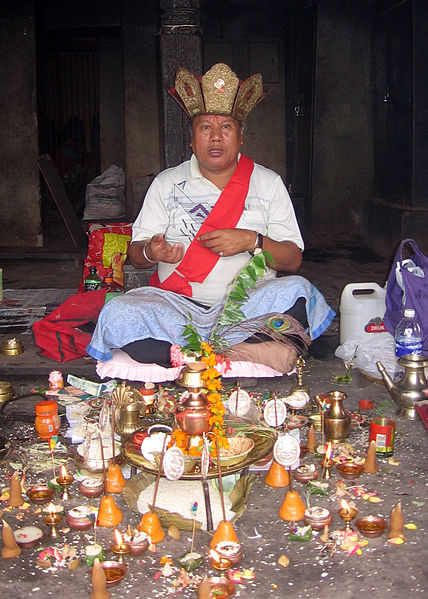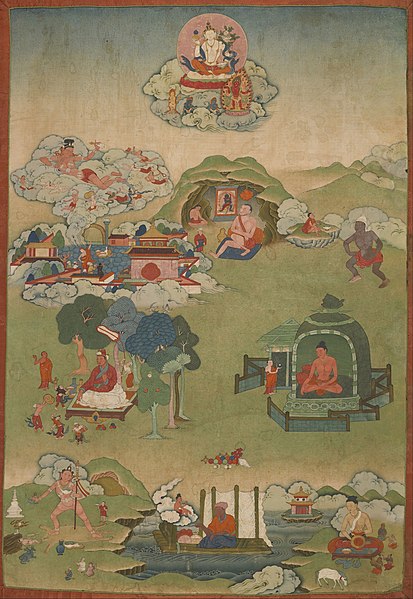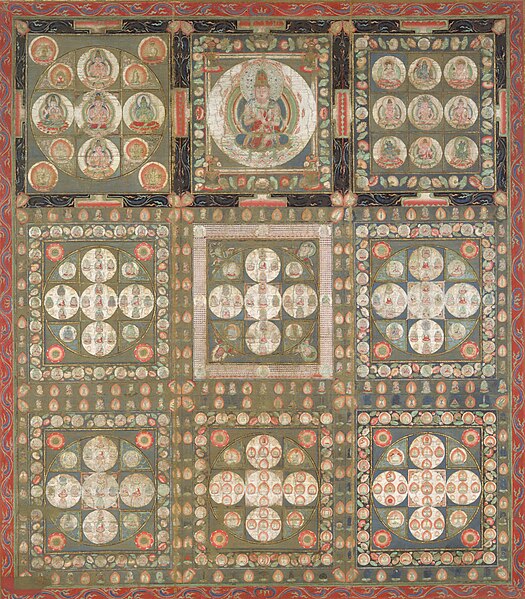Newar Buddhism is the form of Vajrayana Buddhism practiced by the Newar people of the Kathmandu Valley, Nepal. It has developed unique socio-religious elements, which include a non-monastic Buddhist society based on the Newar caste system and patrilineality. The ritual priestly (guruju) caste, vajracharya and shakya form the non-celibate religious clergy caste while other Buddhist Newar castes like the Urāy act as patrons. Uray also patronise Tibetan Vajrayana, Theravadin, and even Japanese clerics. It is the oldest known sect of the Vajrayana tradition outdating the Tibetan school of Vajrayana by more than 600 years.
Dīpankara Buddha (Bahi-dyah) on display during Gunla.
The bodhisattva Avalokiteśvara, 16th century CE.
A Vajracharya priest
Seto Machindranath Jatra at the Temple of Annapurna
Vajrayāna, also known as Mantrayāna, Mantranāya, Guhyamantrayāna, Tantrayāna, Tantric Buddhism, and Esoteric Buddhism, is a Buddhist tradition of tantric practice that developed in the Indian subcontinent and spread to Tibet, Nepal, other Himalayan states, East Asia, and Mongolia.
A vajra and bell (ghanta), which are classic ritual symbols of Vajrayāna
Mahasiddhas, Palpung monastery. Note the figure of the great adept Putalipa at center, seated in a cave and gazing at an image of the meditational deity Samvara and the figure at the bottom left holding a skull-staff (khaṭvāṅga) and a flaying knife (kartika).
Diamond Realm mandala, based on the tantric Vajrasekhara Sutra, and symbolizing the final realization of Vairocana Buddha in Shingon
Naked tantrikas dancing and eating from skull cups (kapalas), closeup of a Chakrasamvara mandala








